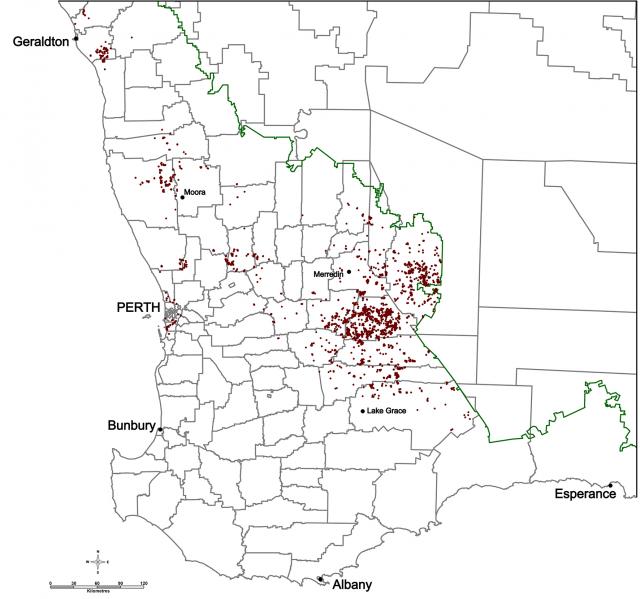Research
Spread modelling to predict the spread of skeleton weed is now being used effectively to target surveillance searching in areas where the pattern of spread is likely to occur.
Field trials are continuing on the use of Unmanned Aerial Vehicles (UAV’s) for the detection of skeleton weed. Significant progress is being made in this program. We now have an effective, suitable platform to undertake the flying and work is continuing on image recognition software. Further field development will be undertaken in December 2017 and the expectation is that the program will be using this in 2018.
Local Action Groups
Six Local Action Groups (LAG’s) were funded by the program during 2016/17, receiving a total of $650,000. Additional funds were provided to enable LAG’s to take on more operational activities, allowing DPIRD staff to focus on compliance and coordination of the program.
The development of LAG’s to undertake the program’s operation activities in some areas has been very successful. Several LAG’s are now working autonomously and undertaking almost all tasks previously completed by DPIRD exclusively.
DPIRD remains the compliance management authority and all compliance requirements are met by DPIRD accordingly.
Figure 4. Location of all infested sites throughout the agricultural regions in 2016/17 season

